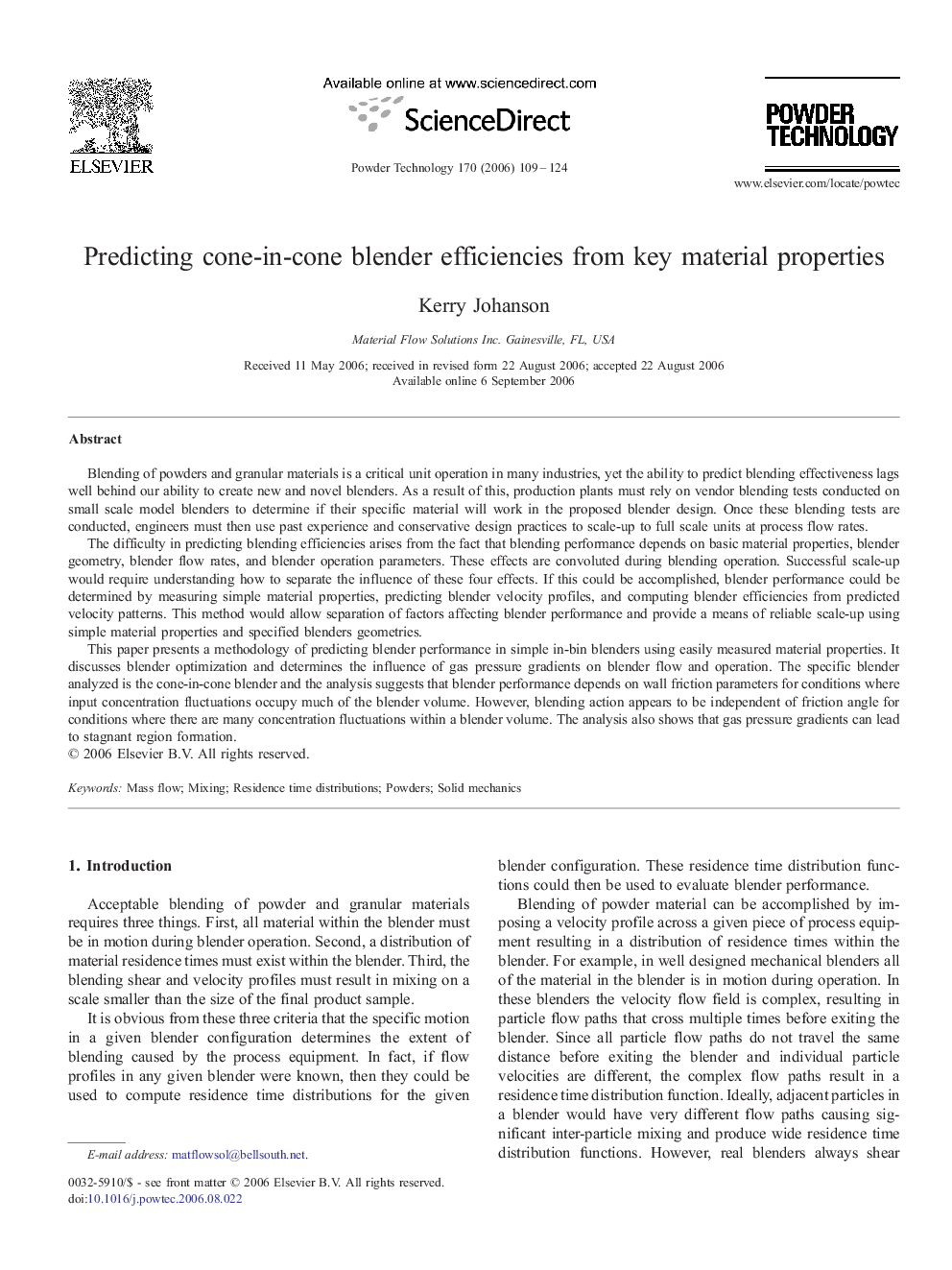| Article ID | Journal | Published Year | Pages | File Type |
|---|---|---|---|---|
| 239321 | Powder Technology | 2006 | 16 Pages |
Blending of powders and granular materials is a critical unit operation in many industries, yet the ability to predict blending effectiveness lags well behind our ability to create new and novel blenders. As a result of this, production plants must rely on vendor blending tests conducted on small scale model blenders to determine if their specific material will work in the proposed blender design. Once these blending tests are conducted, engineers must then use past experience and conservative design practices to scale-up to full scale units at process flow rates.The difficulty in predicting blending efficiencies arises from the fact that blending performance depends on basic material properties, blender geometry, blender flow rates, and blender operation parameters. These effects are convoluted during blending operation. Successful scale-up would require understanding how to separate the influence of these four effects. If this could be accomplished, blender performance could be determined by measuring simple material properties, predicting blender velocity profiles, and computing blender efficiencies from predicted velocity patterns. This method would allow separation of factors affecting blender performance and provide a means of reliable scale-up using simple material properties and specified blenders geometries.This paper presents a methodology of predicting blender performance in simple in-bin blenders using easily measured material properties. It discusses blender optimization and determines the influence of gas pressure gradients on blender flow and operation. The specific blender analyzed is the cone-in-cone blender and the analysis suggests that blender performance depends on wall friction parameters for conditions where input concentration fluctuations occupy much of the blender volume. However, blending action appears to be independent of friction angle for conditions where there are many concentration fluctuations within a blender volume. The analysis also shows that gas pressure gradients can lead to stagnant region formation.
Graphical abstractScale up of blending operations is possible when a theoretical understanding of the relationship between blender geometry, material flow properties, and operation parameters is available. Knowledge of key flow properties allows theoretical prediction of blender velocities in cone-in-cone blenders which are then used to provide a means of computing blender efficiencies from derived residence time distributions.Figure optionsDownload full-size imageDownload as PowerPoint slide
